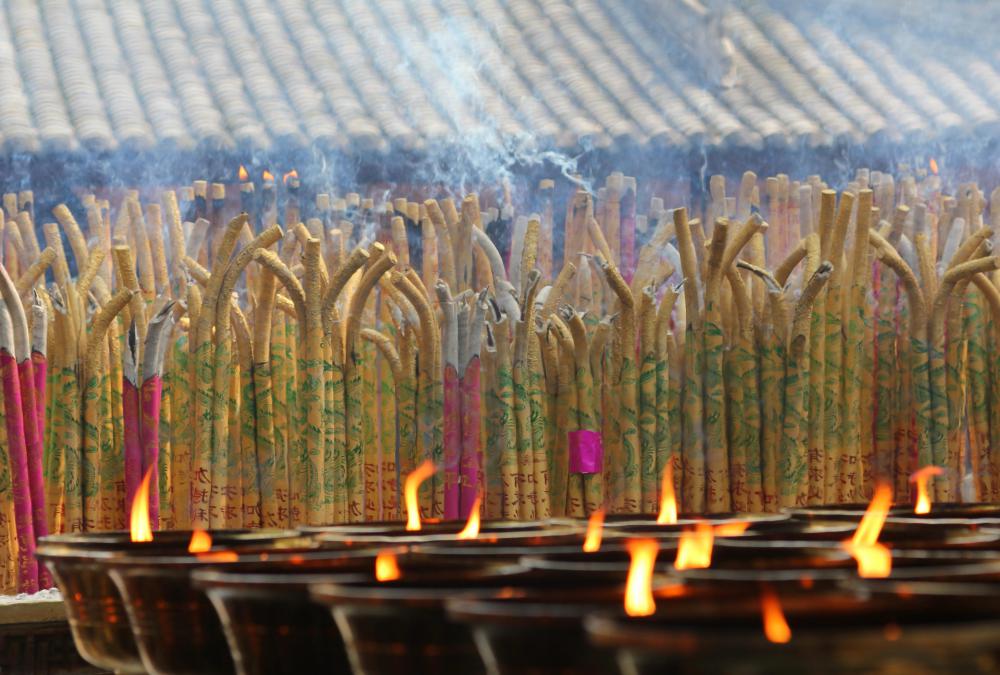At HomeQuestionsAnswered, we're committed to delivering accurate, trustworthy information. Our expert-authored content is rigorously fact-checked and sourced from credible authorities. Discover how we uphold the highest standards in providing you with reliable knowledge.
What is Incense?
Incense is a centuries-old aromatic tool that continues to be popular in modern times. Used in a number of settings, it is widely available in several forms. In terms of cost, it is possible to purchase commercially produced products for very little money, or to make incense at home by purchasing a few basic ingredients.
The history of incense can be traced back to ancient Egypt, where it was used in religious and spiritual ceremonies. It was also burned privately as a means of clearing the home of evil spirits and any form of negative energy. From this perspective, burning it was also seen as a means of promoting health in the family, since many illnesses were thought to be the result of demons and unclean spirits lingering in the home.

In times past, incense was usually created using elements that were readily available in the local area. For example, Native American cultures often used cedar and sage. Now, it is possible to secure ingredients to produce cones and sticks with just about any type of aroma desired.
Incense continues to be used in many religious ceremonies as both a symbol and as a means of creating an environment that is conducive to worship. Most people choose to burn sticks or cones simply for the pleasant aroma that is released as they burn. Practitioners of aromatherapy sometimes prefer to it rather than scented candles. Proponents claim that the gradual release of the scent may serve to help calm people down and connect them with their spiritual core, making it possible to release positive energy to correct many physical and emotional ailments.

It became very popular to burn incense in Western cultures during the 1960s. Readily embraced by young people who were part of the movement to return to the land, it was used at nearly any type of gathering, whether a party or a quiet evening with a romantic partner. More people became interested in making their own products at home, leading to the creation of a niche market that sold kits and ingredients to new enthusiasts.

Incense continues to be a popular way of adding pleasant scents to a home. Various types of burners are available for both cones and sticks. Many of the traditional scents, such as sage, cedar, and sandalwood, remain popular, but have been joined by such perennial favorites as jasmine, bayberry, and cinnamon. Commercial products can be purchased at most supermarkets and drugstores, while hand-made sticks and cones can be found at many flea markets and through online stores.
AS FEATURED ON:
AS FEATURED ON:














Discussion Comments
True incense is not "made" or manufactured. It occurs naturally and is simply the pure tree resin exuded from a few special trees that are found in the middle east and other places around the world. It is burned by placing several pieces on a hot coal.
The incense that has historically been used in churches is usually a combination of several different resins. They are burned in a thurible – a metal incense burner that hangs from several chains. The little bits of resin are placed directly on top of a burning piece of charcoal. True incense cannot burn by itself, but only turns to smoke when it placed on top of a piece of burning charcoal.
Historically, going back for over two thousand years, this resin is collected from a number of different trees. In western culture, the three oldest and most well-known incense varieties are frankincense, myrrh, and copal. All three of these come from the Burseraceae family of trees, also commonly known as "the Torchwood family."
The first of these, frankincense, is nothing more than the pure clear or opaque resin from the Boswellia sacra, which is native to the Arabian peninsula. It actually looks like little drops of amber. Lesser grades of frankincense are also drawn from the Boswellia carteri and the Boswellia frereana.
Harvesting frankincense is accomplished by slashing the tree bark and allowing the resin (not sap) to trickle out and harden on the trunk of the tree. The small clear "tears" of resin are then collected. They range in color from colorless to light yellow to orange and even light brown.
Myrrh, which is not nearly as fragrant as frankincense, is collected in the same manner from trees of the genus Commiphora, and principally the species Commiphora myrrha.
Copal is a Central and South American resin, and is derived from the nahuatl word, copalli, meaning "incense." Nahuatl is a family of languages spoken by the native cultures of Mesoamerica. They used the word to describe the fragrant resin of the genus Bursera, principally the Bursera odorata and the Bursera microphylla.
There are a number of other trees and plants around the world that also exude resin that have historically been burned as incense. Their common names and the botanical names of the plants from which they are collected are:
Acacia, or Gum Arabic, are common names used to describe the resin that is burned as incense, and which comes from two species of Acacia - the better quality resin coming from the Acacia senegal.
Chios, or Mastic Gum, is the name of the resin from the Pistacia lentiscus (or Greek Pistachio). It has been used as a chewing gum for over 2,000 years, and it is used in foods and beverages as it is an aid to digestion. The resin is burned as incense.
Colophonium or Colophony, are generic terms used to describe any pine resin. Originally, it only described the resin of the pine trees of Colophon, an ancient Greek city. Pine resin can be burned as pleasant incense.
Damar, a Malay word meaning "incense," is a term that is used generically to describe the resins from the genus Agathis of the Auracarian family, or from the genus Shorea of the family Dipterocarpaceae.
Elemi, or Canarium, is the resin from trees of the genus Canarium in the family Burseraceae. Like the others on this list, it is burned as incense.
Olibanum is an aromatic resin from the species Boswellia serrata. As it is from a species of Boswellia, it is very similar to frankincense, which is collected from trees of a different species in the same genus. Olibanum is a very old and valued incense resin.
Protium is the name of a resin that is exuded by a genus of trees of the same name. The genus Protium is a part of the family Burseraceae, and so is closely related to frankincense and myrrh.
Styrax, or Benzoin, or Benjamin, are common terms used to describe the resin taken from the trees of the genus Styrax. These resins all burn with a distinct vanilla ice cream aroma.
Some people will "make" incense by combining artificial scents with wood and paper chips into cones or cakes or sticks, etc. However, for well over 2,000 years, real incense (frankincense, myrrh, copal and others) has historically been nothing more than the pure, rare and valuable resins of certain trees and plants.
@Oceana – Jasmine incense is lovely. I also love juniper incense. It tends to invigorate me and make my home feel more lively.
Maybe it is the “green” smell of the juniper tree that makes the air seem to have more life in it. I buy hand dipped incense, so the fragrance is really powerful and longlasting.
I have heard that people who make incense dip it in aromatherapy oil to give it its scent. I prefer burning a stick of incense to burning the actual oil, though. I think oil is a bit too potent in its original form.
My favorite scent is jasmine, and I was able to find some cheap jasmine cones that smell just wonderful. This scent puts me in a good mood and opens up my creativity a little. I like to burn it while I'm drawing or painting.
Cedar is my favorite incense fragrance. I burn it during holiday parties to impart a nice woodsy, homey feeling to the atmosphere.
I make sure to put it up high enough on a shelf that children can't reach it. Nothing ruins a holiday party like the carpet catching on fire!
Post your comments